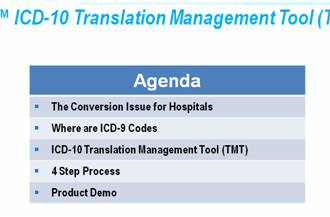 I have the pleasure of meeting or speaking with many digital health, health IT, medTech, and life sciences (especially genomics and bioinformatics) startups every week. As a serial entrepreneur and angel investor myself I know how hard it is these days to get to product/market fit while working with top-notch investors who understand how to help scale a business.
I have the pleasure of meeting or speaking with many digital health, health IT, medTech, and life sciences (especially genomics and bioinformatics) startups every week. As a serial entrepreneur and angel investor myself I know how hard it is these days to get to product/market fit while working with top-notch investors who understand how to help scale a business.
 I have the pleasure of meeting or speaking with many digital health, health IT, medTech, and life sciences (especially genomics and bioinformatics) startups every week. As a serial entrepreneur and angel investor myself I know how hard it is these days to get to product/market fit while working with top-notch investors who understand how to help scale a business. Last week I wrote about how strategically integrated investors help de-risk innovations and I got some great questions via e-mail about how cofounders and startups should go about seeking such investors.
I have the pleasure of meeting or speaking with many digital health, health IT, medTech, and life sciences (especially genomics and bioinformatics) startups every week. As a serial entrepreneur and angel investor myself I know how hard it is these days to get to product/market fit while working with top-notch investors who understand how to help scale a business. Last week I wrote about how strategically integrated investors help de-risk innovations and I got some great questions via e-mail about how cofounders and startups should go about seeking such investors.
First, try to attend the MidAmerica Healthcare Venture Forum in Chicago next week. The advice, panels, and networking should be top-notch and worth the effort.
Second, try to figure out how you’re going to explain the risks in your business and de-risk your innovations.
What I call the “Venture Development Lifecycle” (VDLC) is the path from an idea to product/market fit and profitability. As you go from one phase to another in the VDLC and are seeking investors to join you on the journey you’ll have one key task at each phase: show how you’ve already reduced risk in the previous phases and which risks remain in future phases. Some of the highest risks for startups come when a venture is moving from one capital raise phase (e.g. seed or angel) to another (e.g. VC, growth equity, or PE).
Try and answer these questions for the various digital health investment phases:
- Seed: how high is the innovation risk? Can you show that the idea works elsewhere?
- Angel: have the requirements and innovation risks been ironed out enough so that a product’s technical risks are all that remain before landing a customer?
- Super angel: Have the technical risks been ironed out so that pilots and initial customers are showing success?
- Series A institutional: Have the product/market fit risks been ironed out so that it’s clear that scalable sales are the next barrier?
- Series B and further: Have the initial sales risks been removed so that further scale and support are now the next barrier?
As you go through the VDLC you’ll see it’s mostly a matter of understanding your risks and ironing out the key ones at each stage. You should seek out investors at each stage that clearly understand the de-risk’ing process and could potentially work together as either a syndicate or a strategically integrated value chain. When you interview investors, see how many of them have worked together in the past in either a vertical integrated manner or even as a loosely affiliated approach. The more you lay out your process, the more you understand your risks and help investors understand how you’re de-risked, the easier time you’ll have in the capital raise process.
The post Digital health startups should de-risk using strategically integrated investors appeared first on The Healthcare IT Guy & Digital Health Nexus.
digital health / shutterstock








